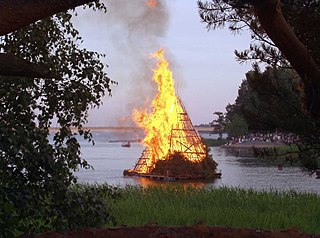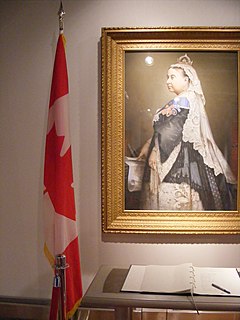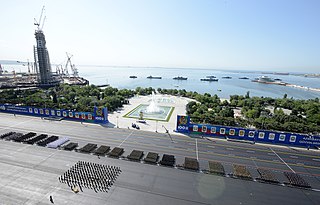
Labour Day is an annual holiday to celebrate the achievements of workers. Labour Day has its origins in the labour union movement, specifically the eight-hour day movement, which advocated eight hours for work, eight hours for recreation, and eight hours for rest.
Mother's Day is a celebration honoring the mother of the family, as well as motherhood, maternal bonds, and the influence of mothers in society. It is celebrated on various days in many parts of the world, most commonly in the months of March or May. It complements similar celebrations honoring family members, such as Father's Day, Siblings Day, and Grandparents Day.

Father's Day is a day of honouring fatherhood and paternal bonds, as well as the influence of fathers in society. In Catholic countries of Europe, it has been celebrated on March 19 as Saint Joseph's Day since the Middle Ages. In America, Father's Day was founded by Sonora Smart Dodd, and celebrated on the third Sunday of June for the first time in 1910. The day is held on various dates across the world and different regions maintain their own traditions of honouring fatherhood.

The flag of Finland, also called Siniristilippu, dates from the beginning of the 20th century. On a white background, it features a blue Nordic cross, which represents Christianity.

A bonfire is a large and controlled outdoor fire, used either for informal disposal of burnable waste material or as part of a celebration.

The flag of Poland consists of two horizontal stripes of equal width, the upper one white and the lower one red. The two colours are defined in the Polish constitution as the national colours. A variant of the flag with the national coat of arms in the middle of the white fess is legally reserved for official use abroad and at sea. A similar flag with the addition of a swallow-tail is used as the naval ensign of Poland.
Public holidays in Australia refer to the holidays recognised in law in Australia. Although they are declared on a state and territory basis, they comprise a mixture of nationally celebrated days and holidays exclusive to the individual jurisdictions.
Midsummer is the period of time in the middle of the summer. The exact dates vary among different cultures. The celebration predates Christianity, and existed under different names and traditions around the world.

Victoria Day is a federal Canadian public holiday celebrated on the last Monday preceding May 25. Initially in honour of Queen Victoria's birthday, it has since been celebrated as the official birthday of Canada's sovereign. It is informally considered to be the beginning of the summer season in Canada.
All official holidays in Finland are established by acts of Parliament. The official holidays can be divided into Christian and non-Christian holidays. The main Christian holidays are Christmas, New Year's Day, Epiphany, Easter, Ascension day, Pentecost, Midsummer Day, and All Saints' Day. The non-Christian holidays are May Day and the Independence Day of Finland.

The national flag of the United Kingdom is the Union Jack, also known as the Union Flag.
Public holidays in Croatia are regulated by the Holidays, Memorial Days and Non-Working Days Act.

Many nations around the world observe some kind of Armed Forces Day to honor their military forces. This day is not to be confused with Veterans Day or Memorial Day.
According to Greek law every Sunday of the year is a public holiday. In addition, there are six obligatory, official public holidays: New Year's Day, 25 March, Easter Sunday, Easter Monday, 15 August and 25 December. Two more days, 1 May and 28 October, are regulated by law as optional but it is customary for employees to be given the day off. There are, however, more public holidays celebrated in Greece than are announced by the Ministry of Labour each year as either obligatory or optional. The list of these non-fixed National Holidays rarely changes and has not changed in recent decades, giving a total of twelve National Holidays each year.

Half-mast or half-staff refers to a flag flying below the summit of a ship mast, a pole on land, or a pole on a building. In many countries this is seen as a symbol of respect, mourning, distress, or, in some cases, a salute. Most English-speaking countries use the term half-mast in all instances. In the United States, this refers officially only to flags flown on ships, with half-staff used on land.

In Article 18 of the Law on the National Arms, Flag, and Anthem there is a listing of dates that the Mexican flag is flown by all branches of government. Civilians are also encouraged to display the national flag on these days. Many of the dates listed in the law denote significant events and people that shaped of Mexican identity and the course of its History. Some of the holidays and commemorations listed require the flag to be flown at half-staff. The national flag can be flown any day of the year by civilians or at festive occasions in persurrence to Article 15 of the Law on the National Arms, Flag, and Anthem.

A flag protocol defines the proper placement, handling, use, and disposal of flags. Some countries have added certain protocols into their legal system while others prefer to have "guidelines" without civil or criminal consequences attached.
Public holidays in Iceland are established by the act of the Icelandic parliament. The public holidays are the religious holidays of the Church of Iceland and the first day of summer, May Day, the Icelandic National Day. In addition, Christmas Eve and New Year's Eve are holidays from 1PM.
Public holidays in Sweden in Sweden are established by acts of Parliament. The official holidays can be divided into Christian and non-Christian holidays. The Christian holidays are jul (Christmas). trettondedag jul (Epiphany), påsk (Easter), Kristi himmelsfärds dag, pingstdagen (Pentecost) and alla helgons dag. The non-Christian holidays are: nyårsdagen, första maj, Sveriges nationaldag and midsommar (Midsummer); Midsummer is, however, officially also a Christian holiday to celebrate John the Baptist's birthday.











